Unlock
Exhibition in Kilmainham Gaol, Dublin, Ireland
June 2019
Anastasia Artemeva
На русском языке
In June 2019 I was invited to visit Unlock, an art exhibition at Kilmainham Gaol and Museum in Dublin, Ireland. This exhibition shows a selection of art and crafts produced in Irish prisons. Some works are made with the guidance of teachers and visiting artists, some are crafted in the cells with materials available at hand, and some are produced by former prisoners who started their creative journey while still behind bars, and successfully pursued an artistic career upon release.
Tom Shortt, Arts Officer & Coordinator with the Irish Prison Education Service led a tour, and discussed each of the artworks thoroughly and passionately. Framed to museum standards, the artworks are thoughtfully arranged and dramatically lit. Tom is a caring tour guide, and knows the background of each piece and the life story of its author.
The quality of the artwork is impressive. The themes reflect everyday subjects and questions of time, religion and personal struggle. Examples of collective artworks such as a ceramic tiles project and a crochet blanket made by 32 female residents of Limerick prison are included.
 Image :Kilmainham Gaol. © National Monuments Service. Dept. of Arts, Heritage and the Gaeltacht.
Image :Kilmainham Gaol. © National Monuments Service. Dept. of Arts, Heritage and the Gaeltacht.Kilmainham Gaol, a former prison and now a prison museum, opened in 1796 as the new County Gaol for Dublin. It closed its doors in 1924. The building presents the journey to the independence of Ireland, as leaders of the rebellions of 1798, 1803, 1848, 1867 and 1916 were detained and in some cases executed here. During the Anglo-Irish War (1919-21) and the Irish Civil War 1922-23 many members of the Irish Republican movement were detained in Kilmainham Gaol, guarded by British troops.
 Image:Kilmainham Gaol. © National Monuments Service. Dept. of Arts, Heritage and the Gaeltacht.
Image:Kilmainham Gaol. © National Monuments Service. Dept. of Arts, Heritage and the Gaeltacht.“It should not be forgotten however that, as a county gaol, Kilmainham held thousands of ordinary men, women and children. Their crimes ranged from petty offences such as stealing food to more serious crimes such as murder or rape. Convicts from many parts of Ireland were held here for long periods waiting to be transported to Australia.”
Unlock is on view in the temporary exhibition space upstairs. The first space is the recently restored Governer’s Room and it is mainly dedicated to the work of Eddie Cahill. He started painting in prison and did not return to a life of crime. Art making was hugely influential and it transformed his life. His career has developed since he left prison. Eddie exhibits all his paintings in black frames. He calls them his “black box” paintings. The concept is a take on the black box in an aircraft. In other words, it is the box that holds information - about the crash - about when everything goes horribly wrong.
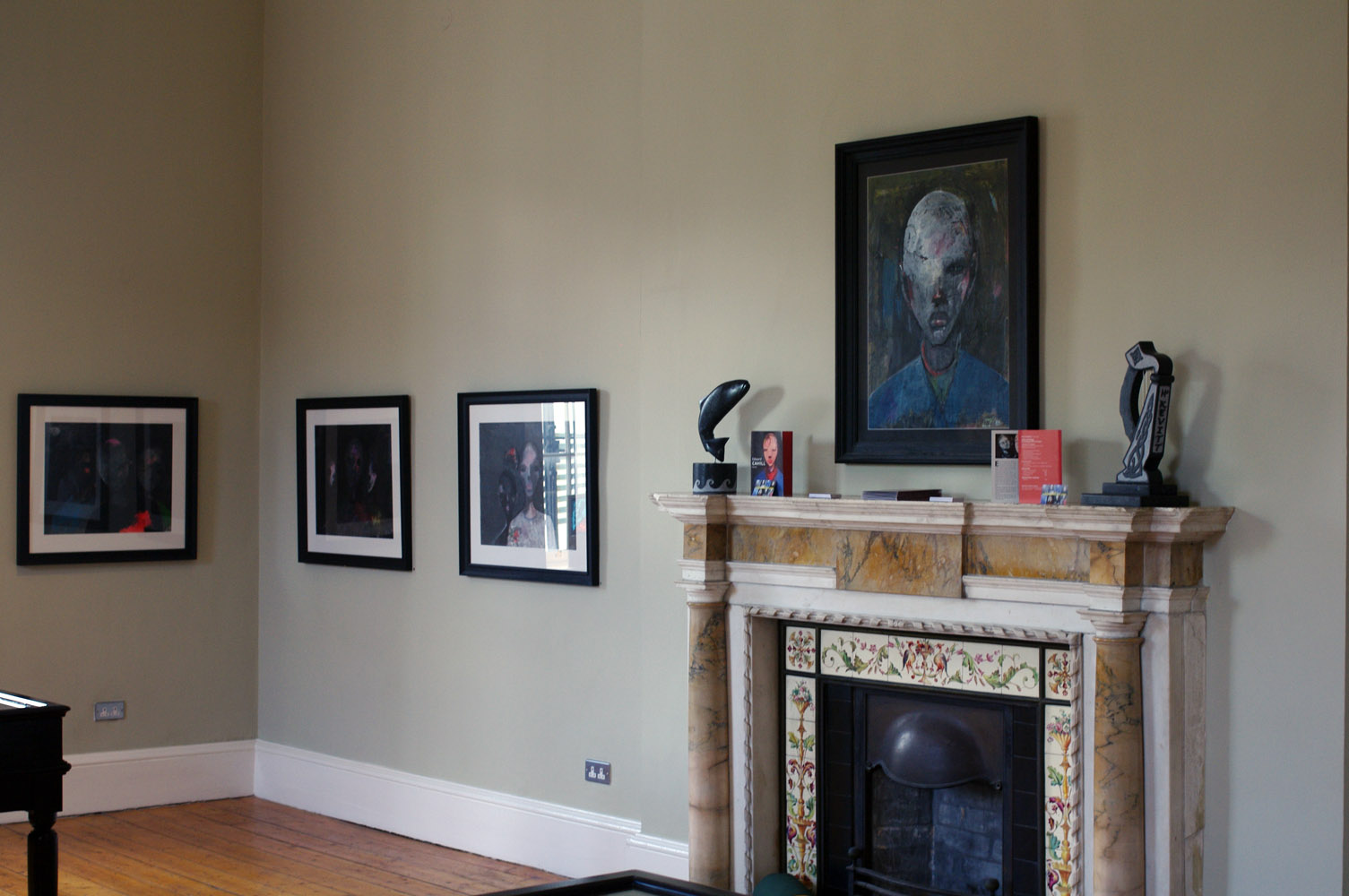 Unlock exhibition in Governer’s Room
Unlock exhibition in Governer’s RoomTom Shortt: These three paintings are remarkable. Each painting is dark and features three figures. The first called New Moons shows the next young generation and they are full of energy and enthusiasm getting into wild and crazy things. They think life is going to work out really well, and that it's all in front of them.
However very quickly in the next painting you see that they have run into a lot of difficulty with crime and violence. In fact it's called The Past because their lives can be very short. In the final painting only the women are left to mourn them, when they are gone. So I think these paintings give a remarkable insight on a life of crime.
I think it would be very good for young people to come and look at these paintings - and to explore them would be very instructive - because it would generate debate about trying to take a step back and to look at what you're getting into. Eddie knows because he went through it all but now I think he's really speaking to a younger generations and he's more or less saying to them: “You know maybe you should stop and think what you're getting into.
 The Mourning After - acrylics on paper – Eddie Cahill
The Mourning After - acrylics on paper – Eddie Cahill
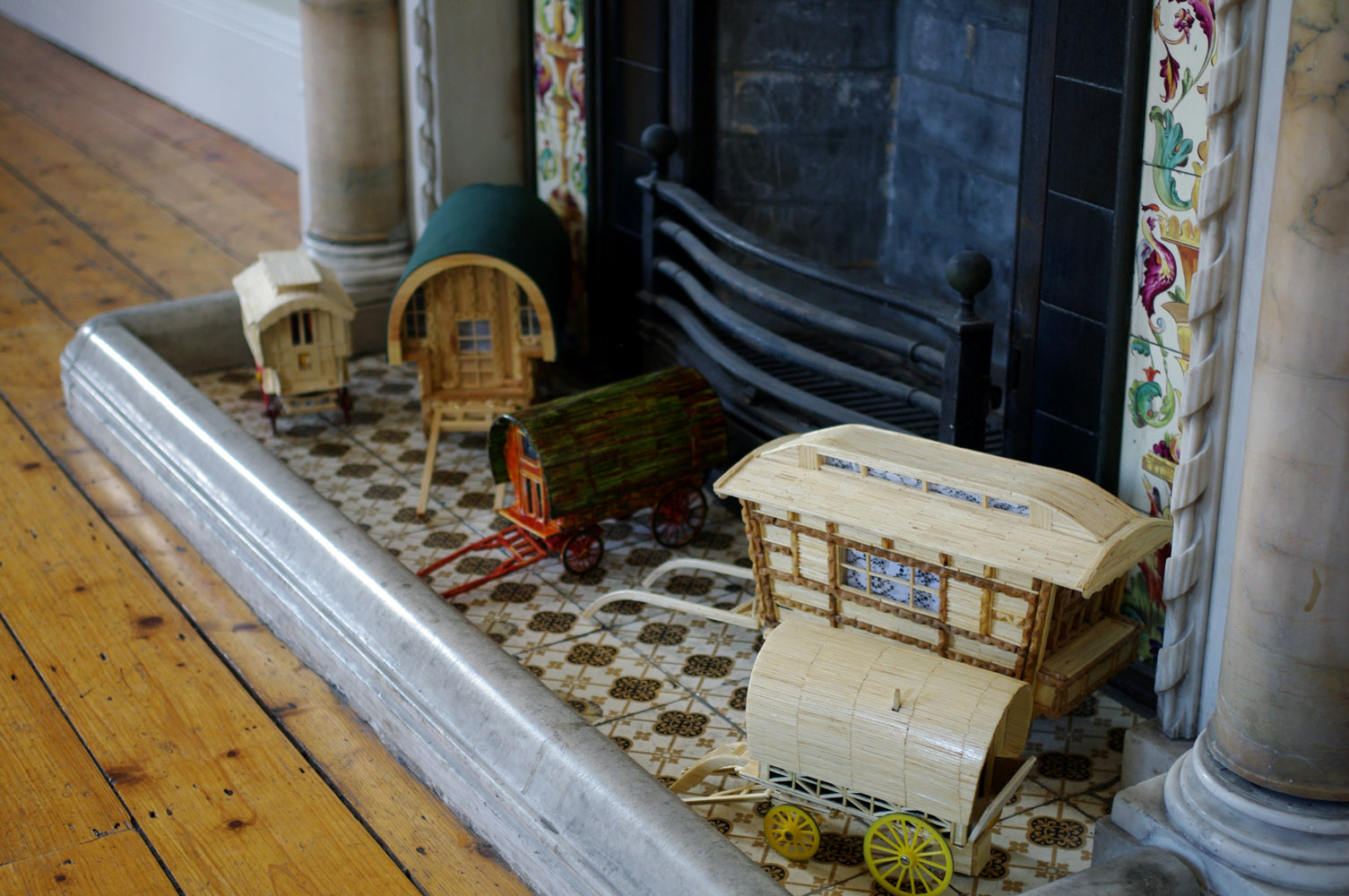 Three small wagons – matchstick models – anon - Cork Prison
Three small wagons – matchstick models – anon - Cork Prison
Two large wagons – matchstick models – anon - Castlerea Prison
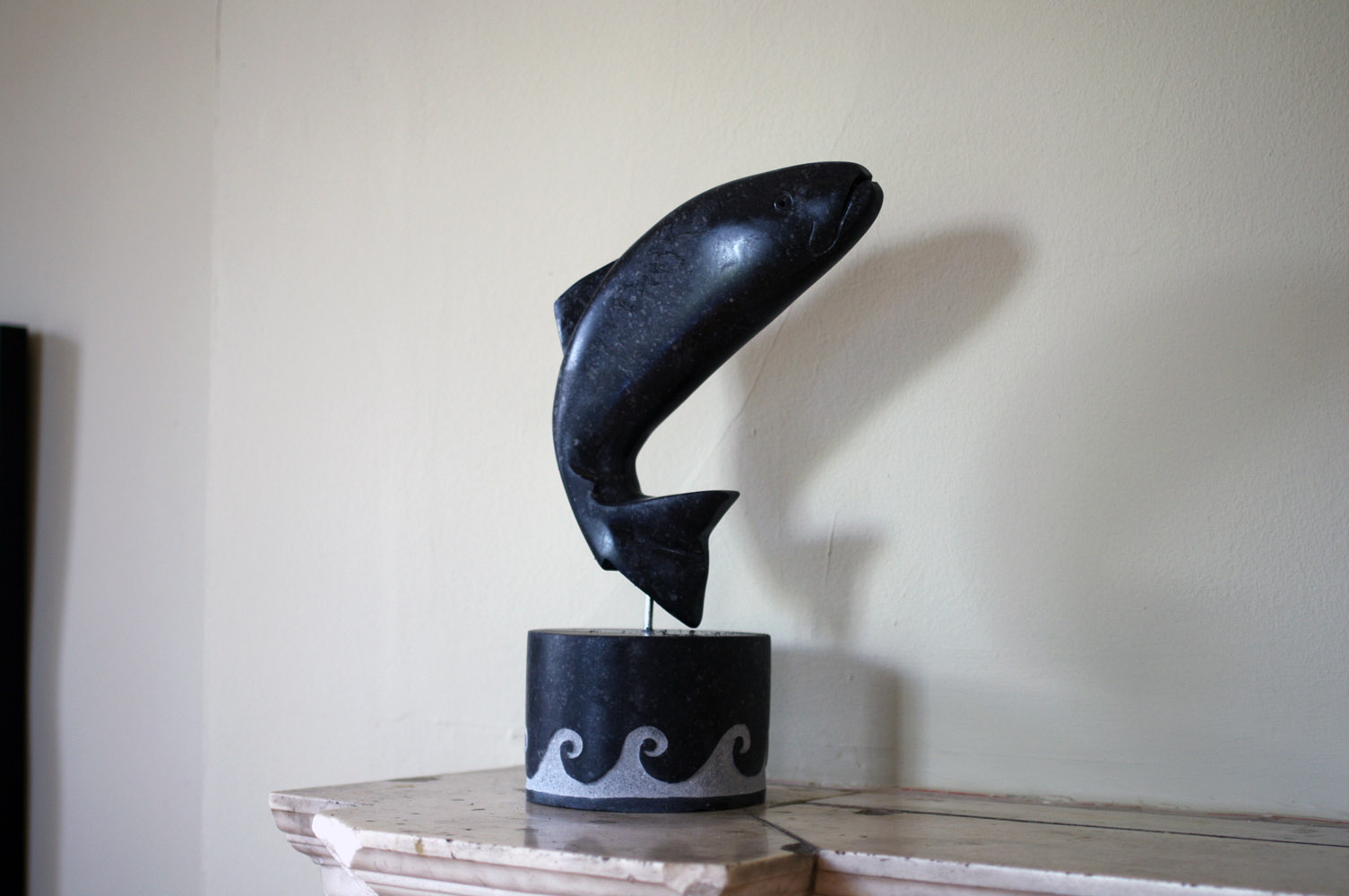 The Salmon of Knowledge – carved limestone – anon - Portlaoise Prison
The Salmon of Knowledge – carved limestone – anon - Portlaoise Prison
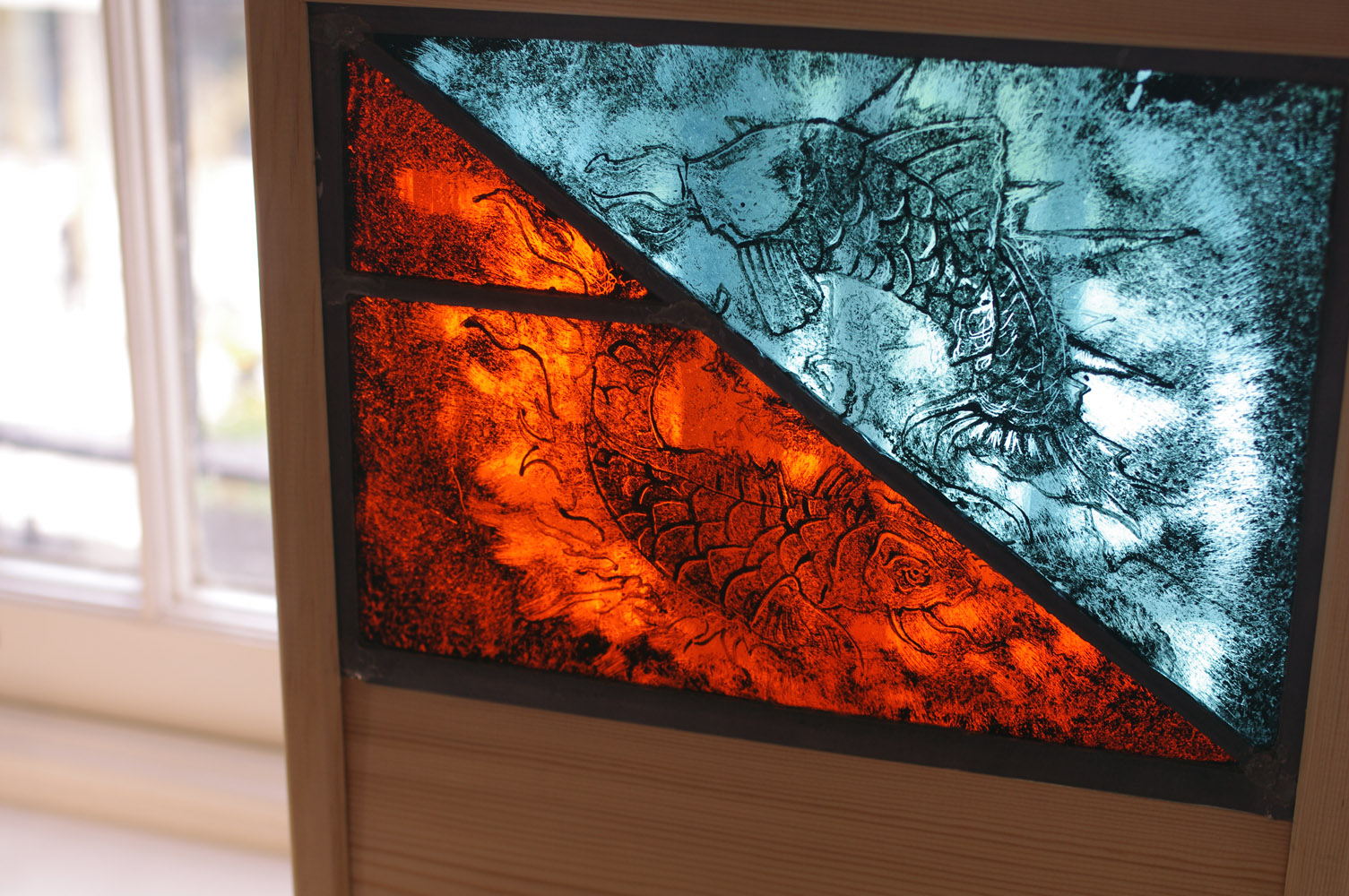 Fish - stained glass panel – anon - Cork Prison – from a VAIP workshop with artist Debbie Dawson
Fish - stained glass panel – anon - Cork Prison – from a VAIP workshop with artist Debbie Dawson Paintings on Cereal Boxes - acrylics - anon - Midlands Prison
Paintings on Cereal Boxes - acrylics - anon - Midlands Prison
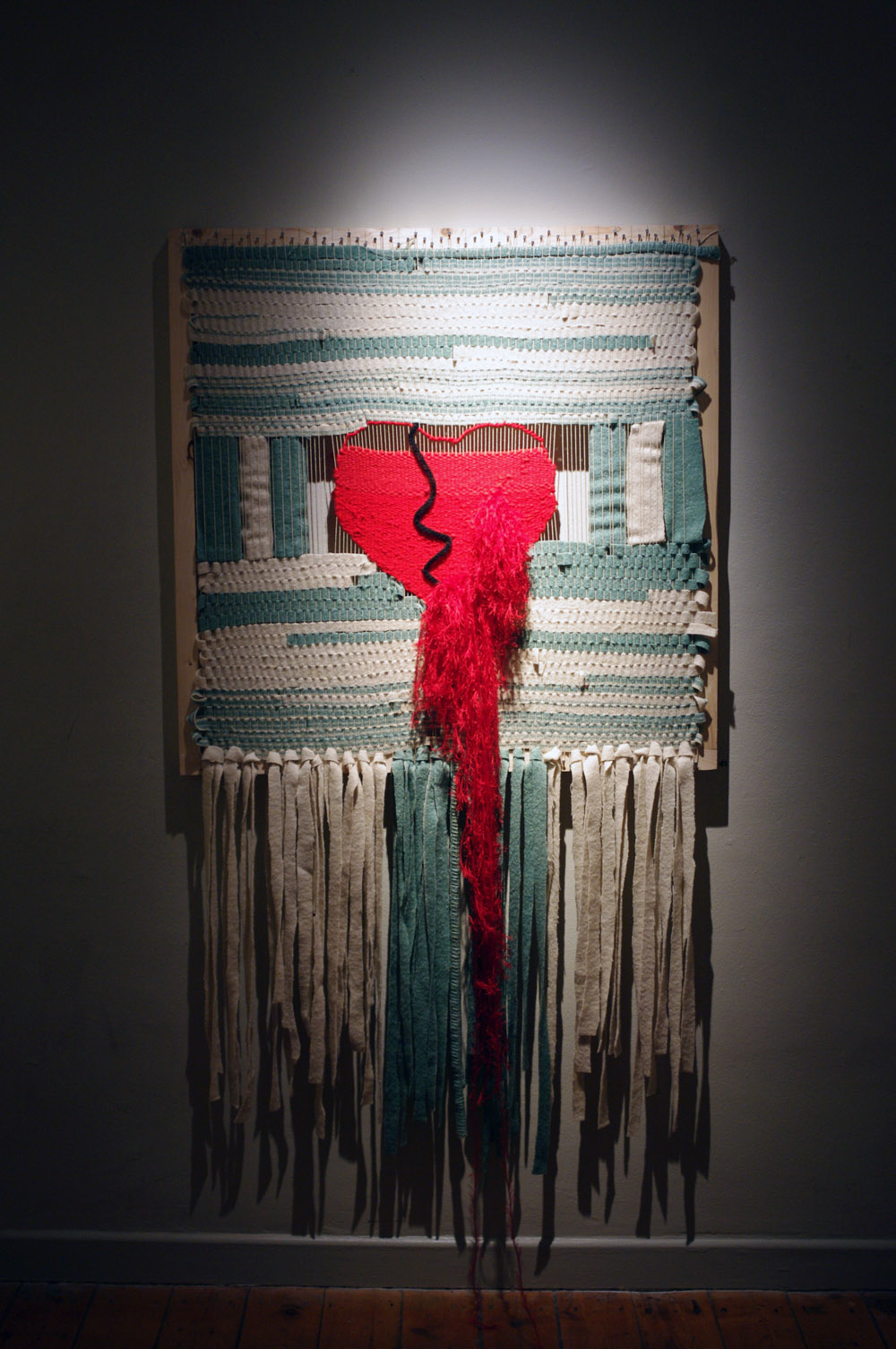 Broken Heart - weaving - anon - Castlerea Prison from a VAIP workshop with artist Frances Crowe
Broken Heart - weaving - anon - Castlerea Prison from a VAIP workshop with artist Frances Crowe
Unlock showcases the art education opportunities that are offered in the correctional facilities throughout Ireland, and it was great to learn more about workshops and classes available to prisoners in Ireland. Art is important for self-expression, and can be a good therapeutic tool. Please read more about the Artists-in-prison and the Writers-in-prison schemes in Ireland here.
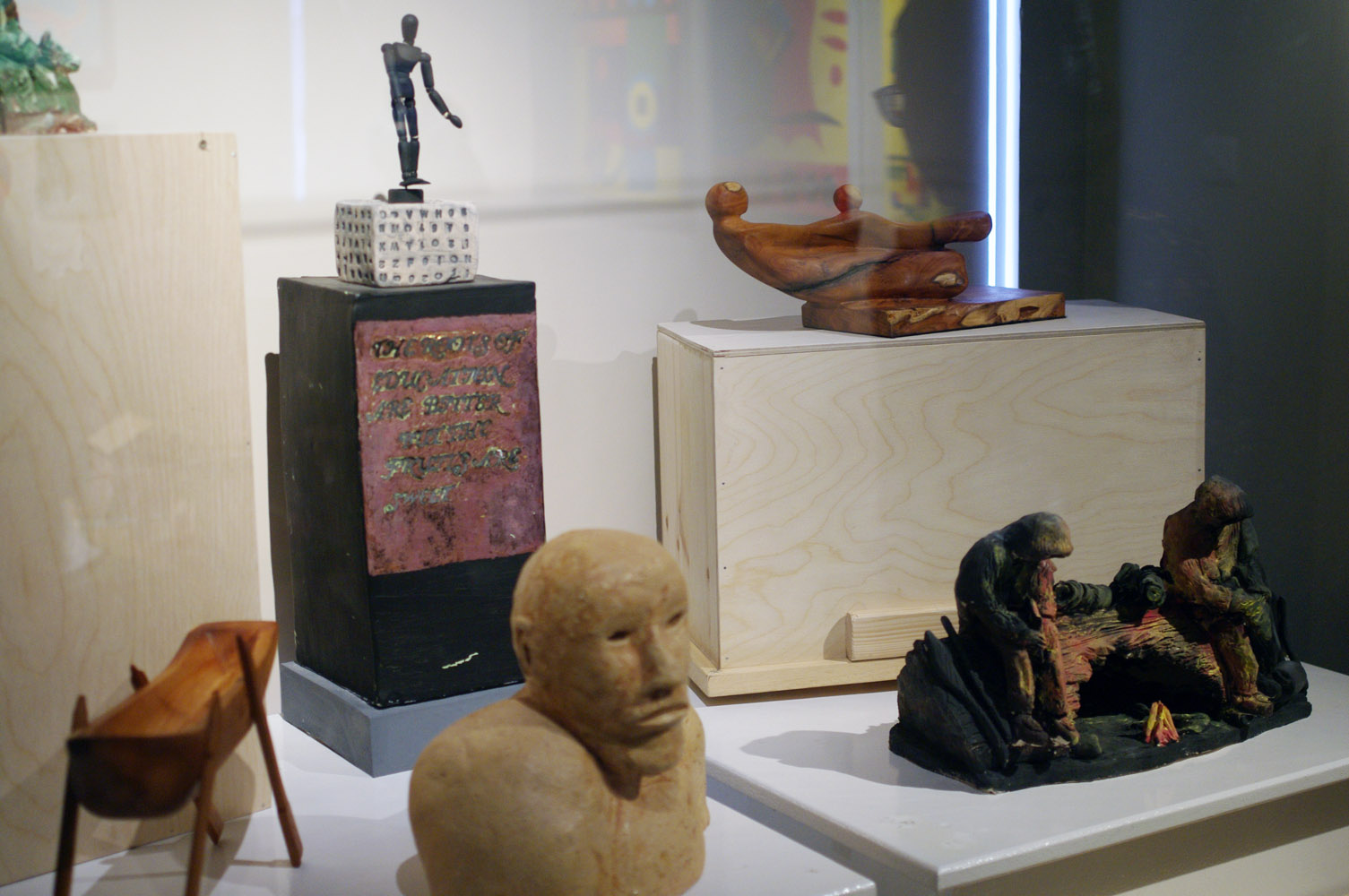 Boat – woodcarving – anon – Shelton Abbey
Bust – ceramics – anon – Wheatfield Prison
Two Brothers – ceramic sculpture – anon – Midlands Prison
Old Man and a Dog – ceramic sculpture – anon – Midlands Prison
Artists Mannequin – ceramic sculpture – anon – Cork Prison
Swinging – woodcarving – anon – Shelton Abbey
Boat – woodcarving – anon – Shelton Abbey
Bust – ceramics – anon – Wheatfield Prison
Two Brothers – ceramic sculpture – anon – Midlands Prison
Old Man and a Dog – ceramic sculpture – anon – Midlands Prison
Artists Mannequin – ceramic sculpture – anon – Cork Prison
Swinging – woodcarving – anon – Shelton Abbey
 Scan – pyrography panel - anon - Cork Prison
Child with Soft Toy - batik - anon - Castlerea Prison
Scan – pyrography panel - anon - Cork Prison
Child with Soft Toy - batik - anon - Castlerea Prison
 Self Portrait - mixed media - Stephen Greer - Prison Arts Foundation Northern Ireland
Self Portrait - mixed media - Stephen Greer - Prison Arts Foundation Northern Ireland
I was surprised and happy to see an artwork designed by a prisoner specifically for children. I had with me a young visitor, 16 months old Adelaide. Children and crime is not something we think about often in the same context. Yet the juxtaposition of artworks created by people in prison and a happy toddler makes me think about young children “serving” the sentence together with their mothers, or families where a parent is incarcerated, and how that affects their life.
Also I feel it’s very important for children to visit Unlock who do not have an experience of incarceration but instead are only exposed to the media portrayal of incarcerated men and women. This way they can get to know the people in prison through their art, to develop empathy and to learn that we can change and grow, given an opportunity and treated with kindness.
Village - wood and mixed-media model – anon – Cork Prison
Unlock is on view at Kilmainham Gaol, Dublin, Ireland until July 21st, 2019.
Unlock was staged to coincide with the 17th International Conference of the European Prison Education Association held in Dublin in June and Tom is currently organizing another exhibition, a national exhibition of creative arts by people in custody, selected by the internationally renowned Irish artist and former prison art teacher Brian Maguire and it will be open to the public at Rua Red, The South Dublin Arts Centre, 6th September – 6th October 2019, and at The Hunt Museum, Limerick, 18th October - 24th November 2019.
June 2019
Images (unless stated otherwise): Steve Maher
